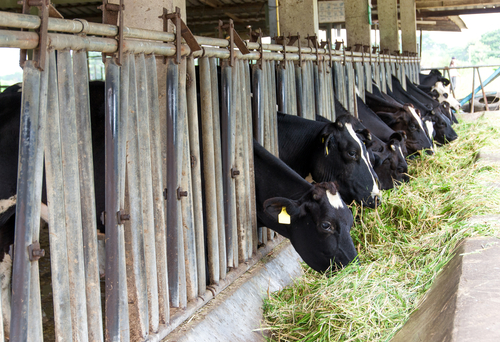 |
The Environmental Protection Agency (EPA) considers CAFOs to be inspection priorities in the war against water pollution. Although many CAFO inspections are routine, several other factors such as permits, citizen tips and complaints, violations, and settlement agreement follow-up visits can also trigger an inspection. With those possibilities in mind, CAFO operators can take the following advice from the EPA to become and remain prepared for an inspection.
1. Evaluate facility operations to assess whether or not there are discharges that are reaching nearby water bodies such as streams, rivers, or lakes. CAFOs must apply for a NPDES permit through the regulatory authority with jurisdiction (state or federal) to determine what controls and permits are required. Inspectors will look at how manure is managed, whether discharges have occurred, and what potential exists for a discharge based on current manure and waste management practices.
Forget expensive calls to lawyers and consultants. With Enviro.BLR.com, you get instant access, 24/7. Try it out today and get the 2014 EHS Salary Guide, absolutely free. Download Now.
2. Read the operation’s NPDES permit and properly implement all requirements. NPDES permit violations are among the top reasons for CAFO inspections, violations, and penalties. Also remember that a facility with NPDES permits cannot expand operations beyond the capacity listed in that current permit without authorization from the state regulatory agency. Consult regulatory authorities if you have questions about any aspect of permit requirements.
3. Maintain effective runoff controls of all production areas, including feed storage areas, in strict compliance with the facility’s NPDES permit. When managing runoff controls, know that inspectors will want to ensure that manure and bedding stockpiles are not contributing discharges, even if they are not located within the facility’s footprint. Keep in mind that man-made ditches or flushing systems that convey runoff from a production area may require a permit. Inspectors will also look at stormwater management such as whether roof drains and gutters are adequately maintained and how well clean stormwater is diverted from animal containment and manure storage areas.
4. Pay special attention to maintaining lagoons, including berms and keep them free of trees and shrubs while also being vigilant of erosion that can compromise integrity. Follow lagoon pump-down level requirements to ensure proper storage levels at all times, and be aware that inspectors may want to know how many days of storage are available in lagoons and other waste containment structures.
Everything You Need for Environmental Compliance
Enviro.BLR.com puts everything you need at your fingertips, including practical RCRA, CAA, CWA, hazardous waste regulatory analysis and activity, news, and compliance tools. Try it at no cost or risk and get a FREE report.
5. Understand the requirements for counting animals correctly. Both EPA and state regulatory agencies require that species in open lots be counted together with similar species in confinement to effectively determine the size status of a CAFO, and whether the operation is small, medium, or large. In the event an operation confines enough animals of one species to be considered a large CAFO, then all animals at the facility must be counted and runoff from these areas must be contained.
6. Keep complete and accurate animal inventory records available at all times for inspectors who will need them to determine and affirm your CAFO status. Disorganized or incomplete recordkeeping can slow inspections and may be a red flag to inspectors whose job it is find areas of noncompliance.
7. Keep complete and accurate records for land application of manure solids and liquids, and follow a nutrient management or manure management plan for application operations that shows compliance with appropriate land application practices.
8. Double-check compliance with all other applicable regulations such as those pertaining to pesticides covered under the Federal Insecticide, Fungicide, and Rodenticide Act (FIFRA) and those of the Spill Prevention, Control, and Countermeasure Act (SPCC) under the oil pollution prevention regulations of the Clean Water Act (CAA).
